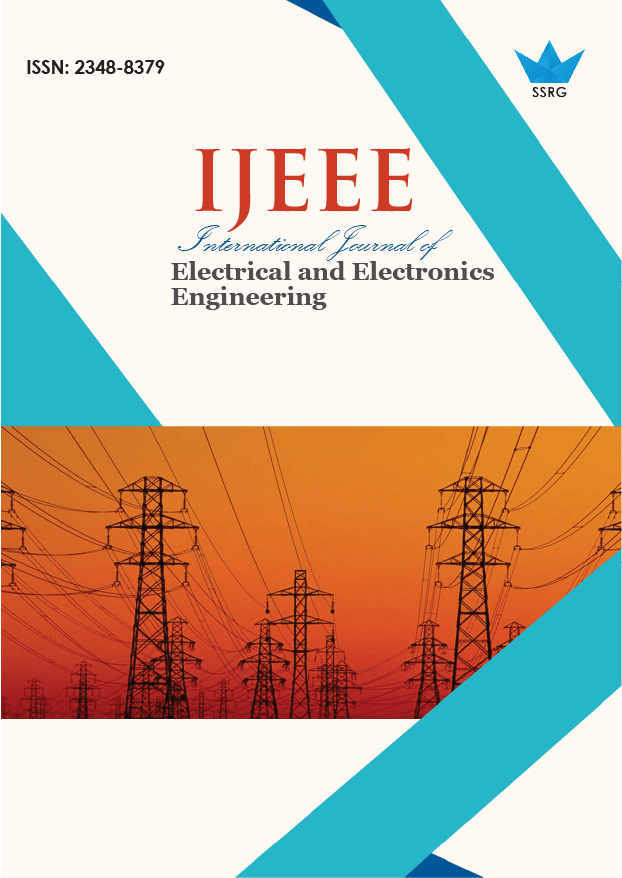Open-Source SCADA System Implementation for Hybrid Microgrid Management with Renewable Energy Sources

| International Journal of Electrical and Electronics Engineering |
| © 2025 by SSRG - IJEEE Journal |
| Volume 12 Issue 1 |
| Year of Publication : 2025 |
| Authors : David Juan Cerezo Quina, Tadeu Felix Santos, Juan Antonio Butron Llamoca, German Alberto Echaiz Espinoza, Andrés Ortiz Salazar, Elmer Rolando Llanos Villarreal |
How to Cite?
David Juan Cerezo Quina, Tadeu Felix Santos, Juan Antonio Butron Llamoca, German Alberto Echaiz Espinoza, Andrés Ortiz Salazar, Elmer Rolando Llanos Villarreal, "Open-Source SCADA System Implementation for Hybrid Microgrid Management with Renewable Energy Sources," SSRG International Journal of Electrical and Electronics Engineering, vol. 12, no. 1, pp. 114-128, 2025. Crossref, https://doi.org/10.14445/23488379/IJEEE-V12I1P111
Abstract:
Microgrids are compact energy systems that integrate renewable sources, such as photovoltaic and wind power, to provide sustainable energy solutions. Microgrids require Supervisory Control and Data Acquisition (SCADA) systems to maintain reliable and efficient operation. This paper introduces a novel, cost-effective, open-source SCADA system tailored for microgrid applications. Implemented on a simulated microgrid with renewable energy inputs, the system leverages a Phase-Locked Loop (PLL) synchronization mechanism for seamless grid integration. The system achieves robust data interfacing, real-time monitoring, and historical data archiving using Matlab-Simulink with an OPC Server and SQL database. Comparative analyses with existing SCADA systems demonstrate its superior cost-effectiveness and adaptability, contributing to sustainable energy accessibility in developing regions like Peru.
Keywords:
Energy management, Microgrid, Open-source software, Renewable energy, SCADA.
References:
[1] Rafael Espinoza et al., Barriers to Overcome in the Attempt of a Massive Intervention of Grid-Connected PV Systems in Peru,” Tecnia, vol. 27, no. 1, pp. 7-13, 2017.
[CrossRef] [Google Scholar] [Publisher Link]
[2] Carlos Vargas-Salgado et al., “Low-Cost Web-Based Supervisory Control and Data Acquisition System for a Microgrid Testbed: A Case Study in Design and Implementation for Academic and Research Applications,” Heliyon, vol. 5, no. 9, 2019.
[CrossRef] [Google Scholar] [Publisher Link]
[3] Ertuğrul Adigüzel, Koray Gürkan, and Aysel Ersoy, “Design and Development of Data Acquisition System (DAS) for Panel Characterization in PV Energy Systems,” Measurement, vol. 221, 2023.
[CrossRef] [Google Scholar] [Publisher Link]
[4] Aslan Gholami et al., “Electrical, Thermal and Optical Modeling of Photovoltaic Systems: Step-by-Step Guide and Comparative Review Study,” Sustainable Energy Technologies and Assessments, vol. 49, 2022.
[CrossRef] [Google Scholar] [Publisher Link]
[5] Shuangshuang Li et al., “Research and Application of a SCADA System for a Microgrid,” Technologies, vol. 5, no. 2, 2017.
[CrossRef] [Google Scholar] [Publisher Link]
[6] Peter Loshin, Tech Target, SCADA (Supervisory Control and Data Acquisition), 2021. [Online]. Available: https://www.techtarget.com/whatis/definition/SCADA-supervisory-control-and-data-acquisition
[7] Matlab, Simulink for Model-Based Design, Mathworks, 2022. [Online]. Available: https://la.mathworks.com/products/simulink.html
[8] Ministry of Energy and Mines, Guidance on Efficient Use of Energy and Energy Diagnosis in Sectors. [Online]. Available: https://www.gob.pe/institucion/minem/colecciones/25400-guias-de-orientacion-del-uso-eficiente-de-la-energia
[9] Matlab, OPC Standards Communication, MATLAB and Simulink - MathWorks, 2022. https://la.mathworks.com/help/icomm/opc.html.
[10] G.O. Young, Synthetic Structure of Industrial Plastics, 2nd Ed, McGraw-Hill, New York, pp. 15-64, 1964.
[Google Scholar]
[11] W.K. Chen, Linear Networks and Systems, Belmont. Wadsworth, Boston, pp. 123-135, 1993.
[12] J.U. Duncombe, “Infrared Navigation-Part I: An Assessment of Feasibility,” IEEE Transactions on Electron Devices, vol. 11, no. 1, pp. 34-39, 1959.
[Google Scholar]
[13] E.P. Wigner, “Theory of Traveling-Wave Optical Laser,” IEEE Transactions on Antennas and Propagation, vol. 134, pp. A635-A646, 1965.
[Google Scholar]
[14] H. Kurss, and W. Kahn, “A Note on Reflector Arrays,” IEEE Transactions on Antennas and Propagation, vol. 15, no. 5, pp. 692-693, 1967.
[CrossRef] [Google Scholar] [Publisher Link]
[15] Earl E. Reber, Richard L. Michell, and Clarence J. Carter, “Oxygen Absorption in the Earth’s Atmosphere,” Technical Report, Aerospace Corp El Segundo Calif Lab Operations, Los Angeles, CA, USA, 1988.
[Google Scholar] [Publisher Link]
[16] J.H. Davis, and J.R. Cogdell, “Calibration Program for the 16-Foot Antenna,” Electrical Engineering Research Lab, Texas University, Austin, 1987.
[Google Scholar]
[17] Members of the Technical Staff Bell Telephone Laboratories, Transmission Systems for Communications, 3rd ed., Western Electric Company, Inc., Winston-Salem, NC, USA, 1985.
[18] W.P. Risk, G.S. Kino, and H.J. Shaw, “Fiber-Optic Frequency Shifter Using a Surface Acoustic Wave Incident at an Oblique Angle,” Optics Letters, vol. 11, no. 2, pp. 115-117, 1986.
[CrossRef] [Google Scholar] [Publisher Link]

 10.14445/23488379/IJEEE-V12I1P111
10.14445/23488379/IJEEE-V12I1P111